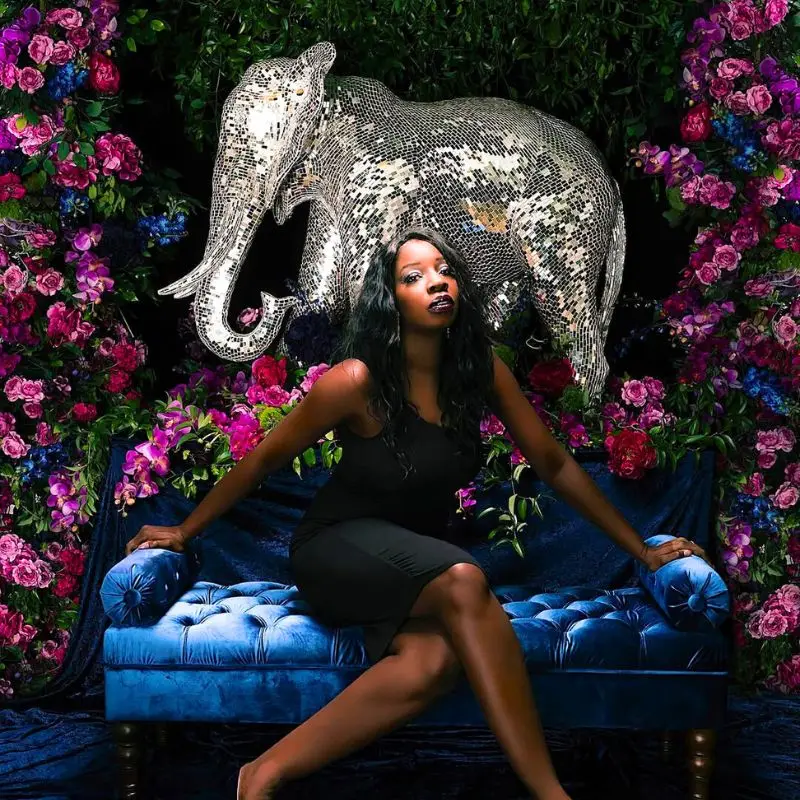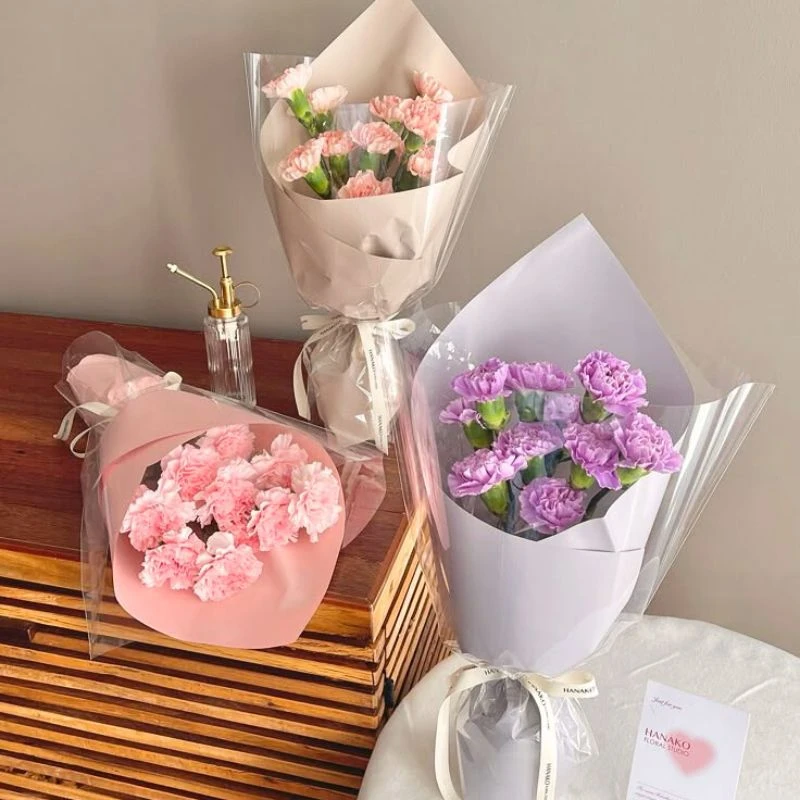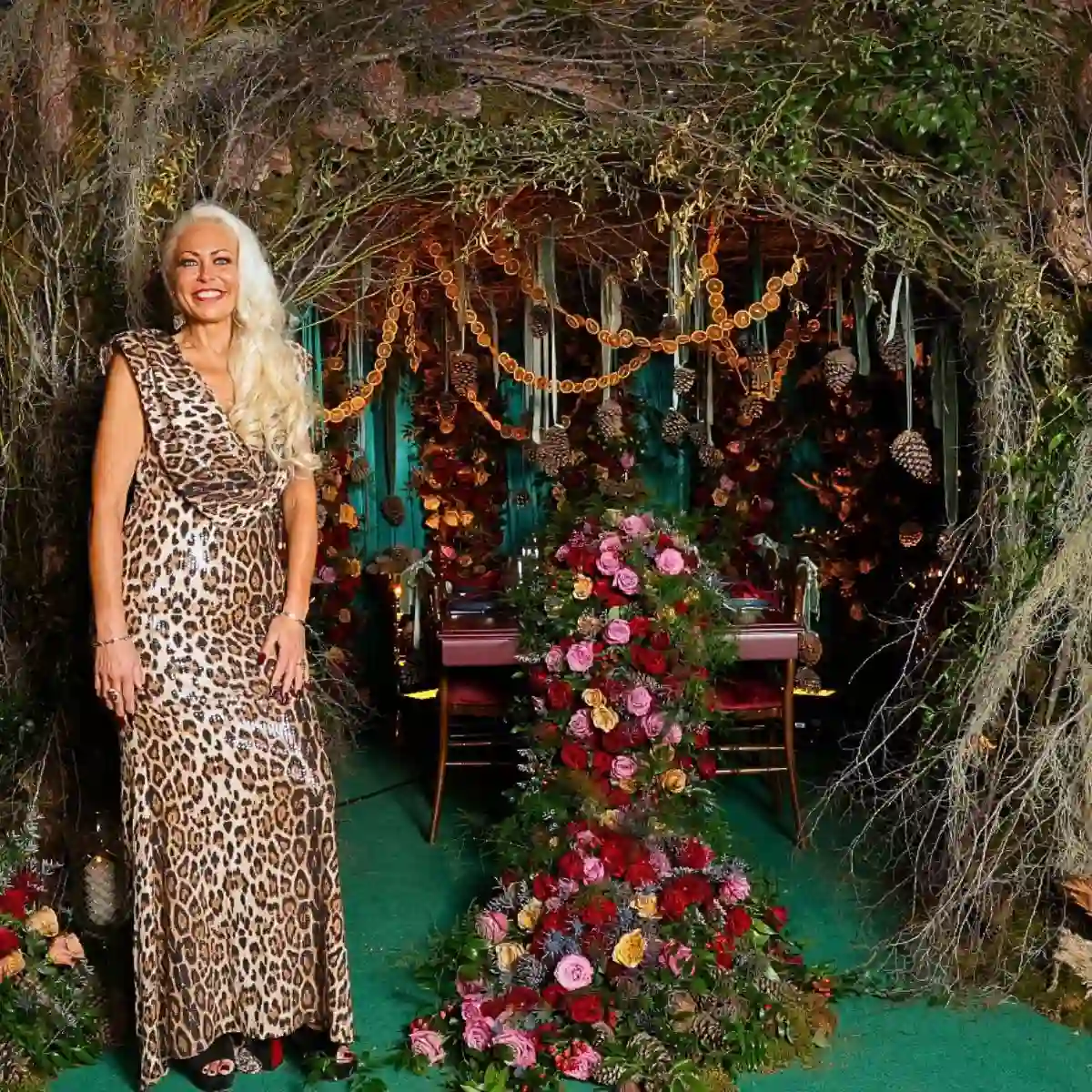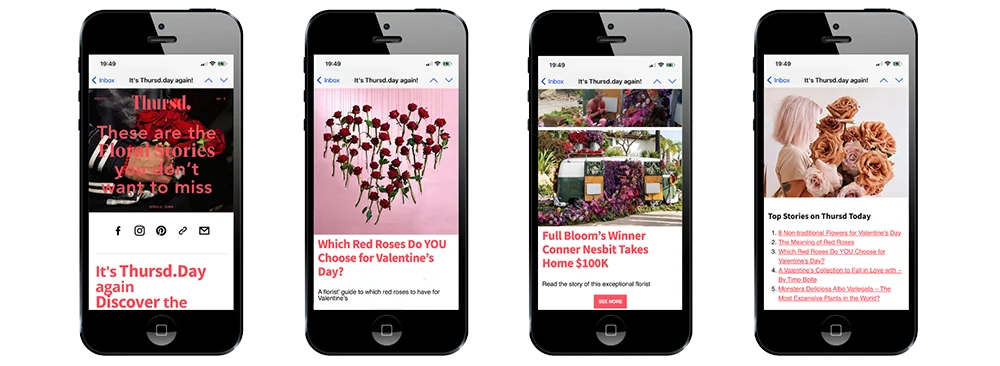Now in its eighth edition, Festival Flora continues to surprise. The core format remains consistent each year, but the invited exhibitors and their creations change, as does the parallel program, which always stays rooted in the botanical world while drawing on different disciplines.
The festival takes place every October in Córdoba, Spain, a city that breathes floral tradition through its balconies and courtyards. This setting creates the ideal backdrop for an encounter dedicated to contemporary floral art.
Creative Freedom Meets Global Audience
Organized by Zizai Cultura with the support of the Córdoba City Council (among others), the festival provides the resources needed for a large-scale event. Thanks to this support, floral artists can develop monumental installations with generous budgets and creative freedom. It is uncommon for florists to work outside commercial commissions, except when developing personal projects. Flora offers that rare space where working with flowers becomes an artistic expression open to the public, in direct dialogue with the surroundings and the emotions they awaken.
Through the festival, the city clearly aims to activate tourism and position itself as an international reference point, a goal that has already seen success. Visitors come predominantly from across Spain but also from many other parts of the world, further amplified by the event’s extensive online reach.
You can find more floral inspiration here: Córdoba, Spain, Inaugurates Another Edition of 'FLORA Festival' Installations

A Different Kind of Festival
What makes Flora stand out among other fairs and exhibitions, and why has it consolidated itself as a true showcase of contemporary floral art?
One key factor is that it is not centered on commercial exchange (admission is free), but on artistic creation. The organization carefully selects its exhibitors: renowned florists who develop a site-specific work in an assigned patio.
Previous editions have featured names such as Mary Lennox (Australia), Tadao Cern (Lithuania), This Humid House (Singapore), Cordero Atelier (Spain), and Tableau (Denmark), among others.
The level of the work is consistently high, both in terms of the scale of the installations and the originality and craftsmanship of each artist. The pieces interact with the surrounding architecture, vary greatly in dimension, and, as a reference, often exceed seven meters in height or width, using substantial quantities of both mechanical and botanical material.

The structures may include scaffolding, metal mesh, or different types of panels, sometimes intentionally left visible as an integral part of the artwork.
The festival also includes an open call, Patio Talento, which offers collectives and emerging creators the opportunity to present their work under similar conditions. This space is especially valuable for fostering diversity and visibility within contemporary floral art.
In parallel, Flora functions as a competition: the five main installations compete for first and second prize, which are attractive both in terms of recognition and financial reward. While some professionals are cautious about competition among colleagues and prefer a purely collaborative spirit, these awards are widely acknowledged as a strong motivation, even for highly experienced artists - especially in a profession that is not always easy or glamorous.
Ultimately, visiting Festival Flora means stepping into a setting where art, community, and nature converge - an experience that inspires both professionals and the general public and reminds everyone why working with flowers is so meaningful.
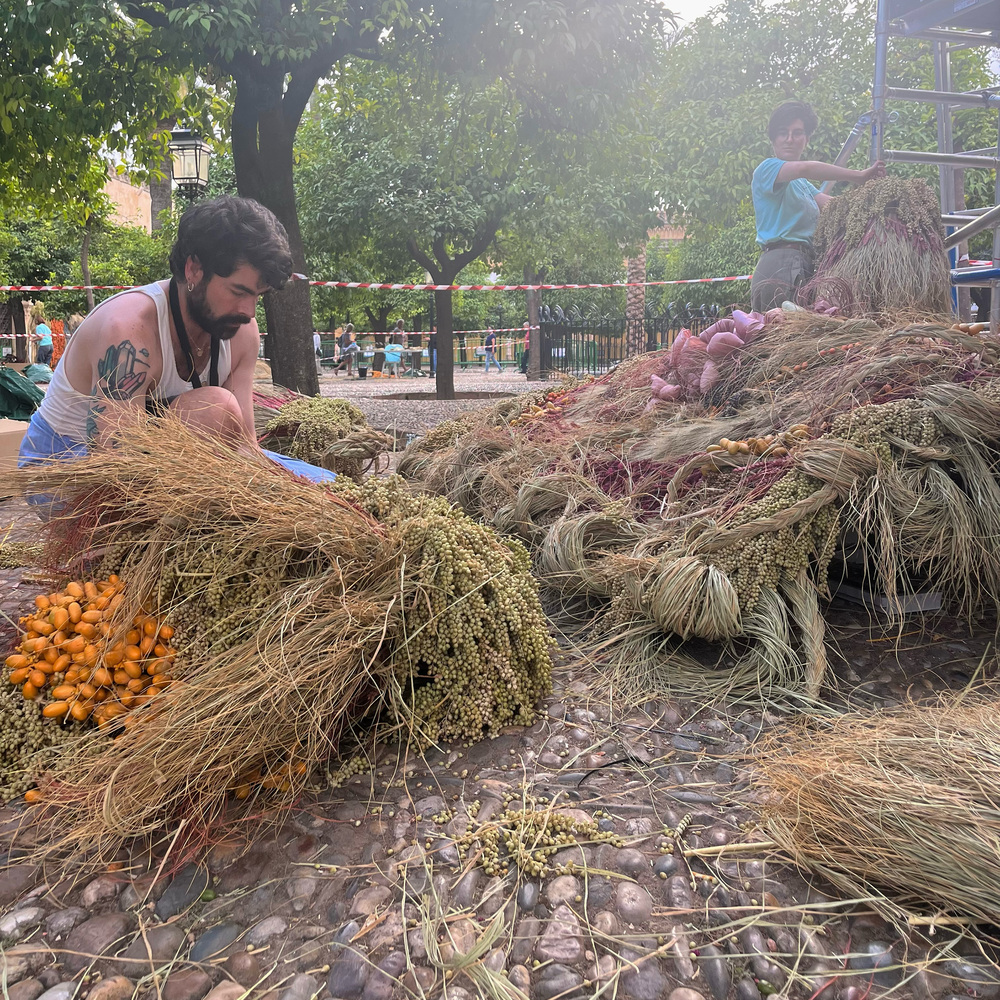
Visitor Experience - Beyond the Flower
While installations and side events can be admired through social media, the in-person experience is far more intimate. Walking through the patios, breathing in the fragrances, observing the scale and details as the doors open to the public after several days of setup, and seeing the creative teams at work offers a depth that digital images simply cannot convey.
International visitors frequently cross hemispheres and seasons to reach Córdoba. Many first immerse themselves in the city’s rich traditions, its Andalusian cuisine, historic streets, and cultural blend, before or after exploring the festival itself.
Córdoba is known for its deep-rooted floral and botanical identity, visible in its UNESCO-listed patios and in festivals such as Los Patios or Fiesta de las Cruces, which for centuries have intertwined nature, art, and everyday life. The city is often described as a “city-garden,” where the famous patios refresh the air and infuse daily life with vitality.
This long-standing tradition, when combined with contemporary floral proposals, creates a distinctive form of tourism and public art - a different way of appreciating flowers as an artistic medium. For floral designers and installation-focused artists, Flora has increasingly become an essential destination that aligns directly with their professional practice.
“Coming from Chile and crossing hemispheres just to walk those patios, I felt how Córdoba itself was already teaching through its courtyards, streets, and balconies,” says floral artist Daniela Fabres, author of this piece. “Festival Flora doesn’t impose something artificial on the city; it amplifies a dialogue between nature, architecture, and daily life that is already there.”
Behind the scenes, the working dynamic is intense. Each invited artist can bring up to two team members, who are joined by three Spanish assistants previously selected by the organization. Over four concentrated days, these teams collaborate to build large-scale installations, facing physical, technical, and emotional challenges together.
Some teams encounter unexpected setbacks; others, working with simpler structures, manage to finish ahead of schedule; many proceed at a measured pace, trusting their process. Across all these approaches, the shared experience for florists is remarkably similar: demanding standards, exhaustion, time pressure - and, equally, strong empathy, teamwork, and humility. Conversations among participants often highlight how universal these experiences are, regardless of origin, and how much mutual respect and warmth circulate in the patios alongside the flowers.
“What moved me most was not only the final installations, but the quiet moments between team members,” recalls Daniela Fabres. “Different languages and techniques came together around the same pressures, the same tired hands, and the same satisfaction when everything finally aligned. It was a reminder that florists everywhere share the same mix of rigor, vulnerability, and generosity.”
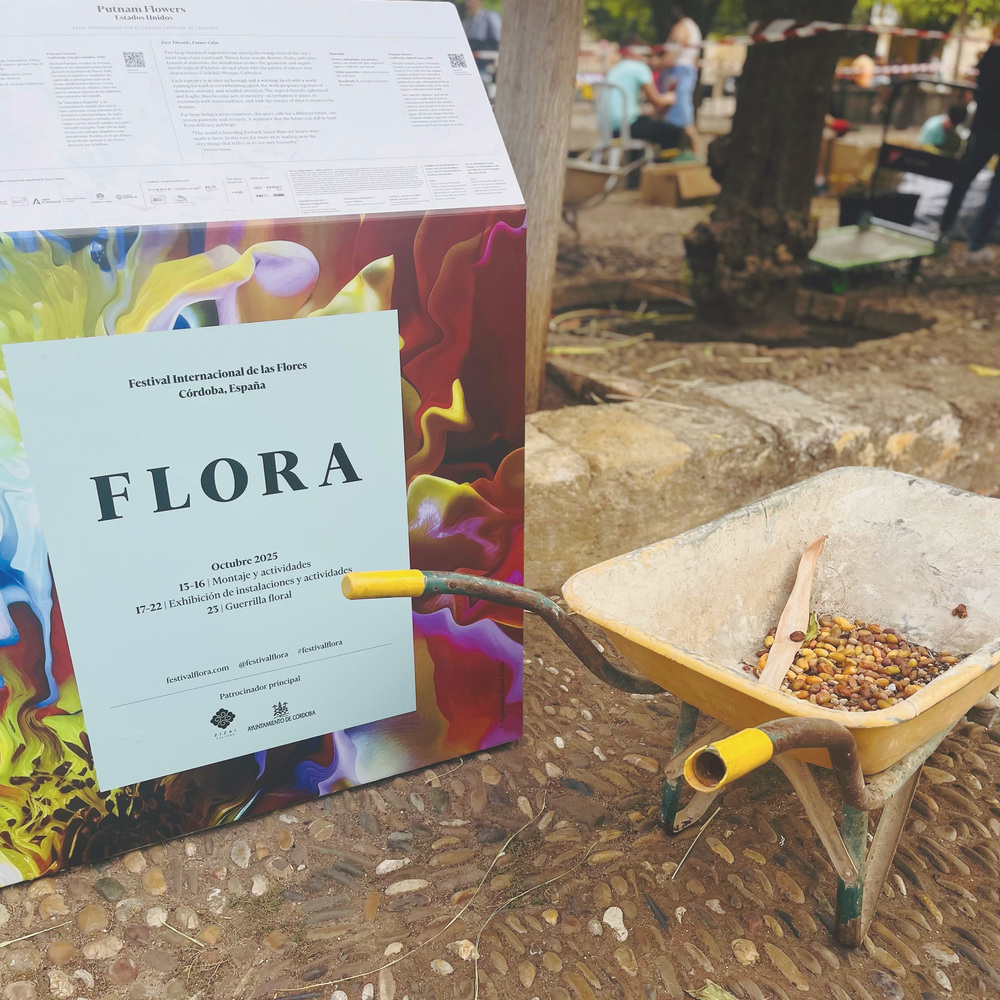
On Current Trends and the Future
The 2025 edition stood out for its use of fewer fresh flowers and a greater presence of organic materials. This shift appears to arise partly from practical considerations, maintaining installations in good condition throughout the exhibition, but also from broader creative and conceptual choices.
Dried, organic, and botanical materials have gained prominence in recent years, not only for their structural capacity but also for the tactile and emotional language they introduce. They shape forms and volumes in a distinctive way and may reflect a desire to reconnect with physical experience and the senses in an era dominated by digital interaction.
Materials such as esparto grass, seeds, corn husk fibers, wheat spikes, coligües, collected branches, and ornamental grasses, some of which were used by the artists, are closely linked to the wider sustainable movement within floral practice. The focus is on reusing, maximizing resources, and respecting the natural world that provides so much, while minimizing harm.
At the same time, the emphasis on sustainable or dried materials sometimes took precedence over color, leading to compositions where neutral and earthy tones dominated. Compared with some previous editions, observers noted fewer bold color contrasts against the architecture of the patios, a feature that had previously been explored to striking effect.
Among the installations, Wagner Kreusch’s proposal particularly stood out and ultimately won first prize. His work was widely praised for its intelligent use of space, expressive bamboo forms, closely aligned with his ikebana-inspired style, and the presence of water as an interactive element. Channels of water invited visitors to follow lines of movement that connected the entire piece: the patio, the flow of the installation, and the path of the spectator.
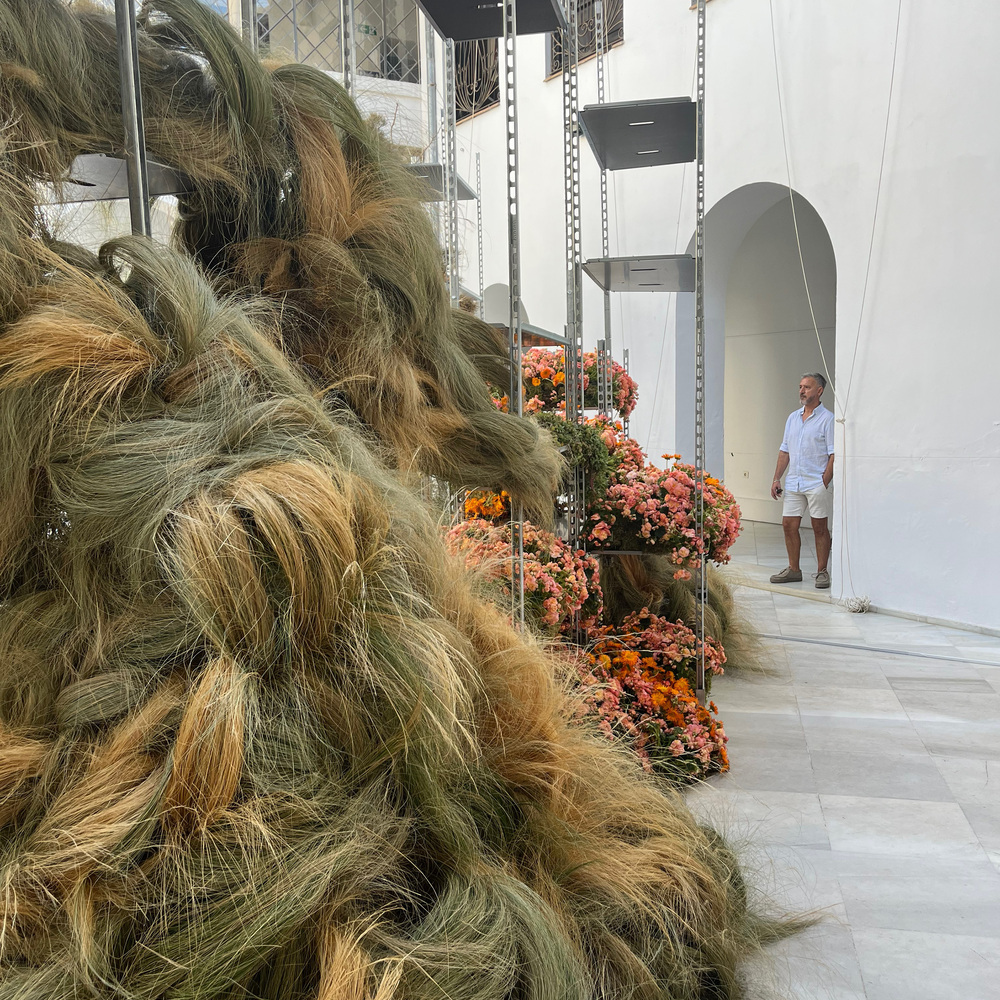
Other elements emerged as notable creative “ingredients,” including Rosandich Design’s (formerly Putnam Flowers) hand-dyed natural fibers and Ikefrana’s biomaterials made from orange peels. These approaches reinforced the ongoing exploration of innovative, environmentally responsible materials in contemporary floral art.
The conceptual theme “Future,” proposed by the festival as the central thread, generated diverse interpretations. However, its visual translation was not always clear. In some cases, such as the works of La Musa de las Flores and Paula Anta, there appeared to be a certain distance between material choices and the conceptual narrative. The underlying ideas were present, but not always immediately legible to the broader audience.
In this sense, the thematic statement did not fully expand into a wider public debate on how the plant kingdom could become a new refuge or possible response to the challenges of the future. The edition nonetheless opened important questions about how floral art can engage with forward-looking concepts in a more explicit and accessible way.
Beyond individual proposals, specific patios, or even the overarching theme, the most enduring impression of Flora is often its human dimension. Flowers act as a universal language that connects people, opens sincere conversations, and evokes deep emotions. For many in the profession, they are not merely materials but symbols, metaphors, and carriers of feeling, and at Festival Flora, all of these facets are amplified.
Looking ahead, expectations for future editions remain high. There is particular interest in seeing whether the inclusion of international assistants, limited in the most recent edition for logistical and legal reasons, can be resumed. Many within the community believe that this would further enrich the cultural and human exchange that already defines the spirit of Festival Flora.
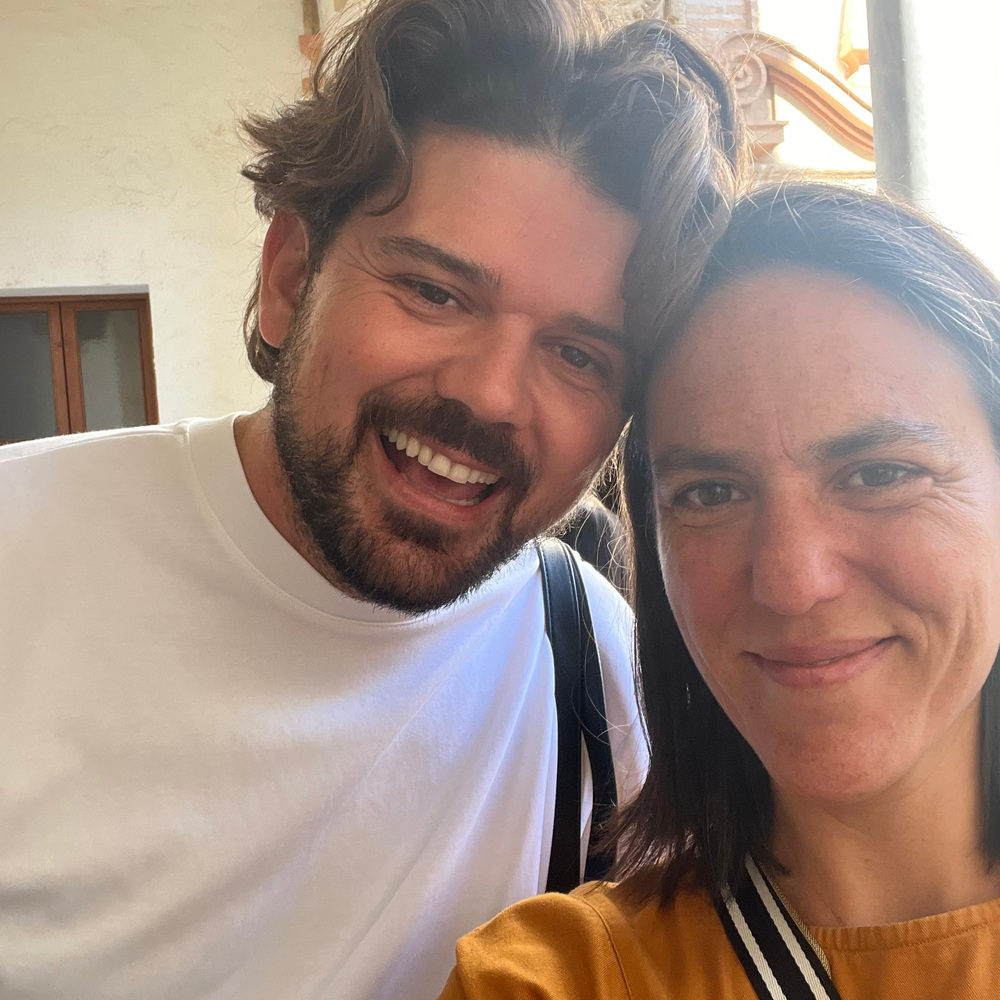
Practical Tips for Future Visitors
For those planning to experience the festival in the coming years, a few practical suggestions can make the visit even more enjoyable:
• Although it is autumn in Spain, Córdoba can still be quite hot: bring light, comfortable clothing. Occasional light showers may occur, so a small umbrella is useful.
• Plan at least two days to explore the festival, or ideally four, to enjoy the patios calmly and fully appreciate the city’s cultural richness.• The main patios and tourist attractions are all within walking distance, making it easy to move between installations and landmarks.
• Book accommodation and activities in advance, especially workshops led by guest artists, which tend to sell out quickly once they are announced.
By Daniela Fabres @danielafabres_



